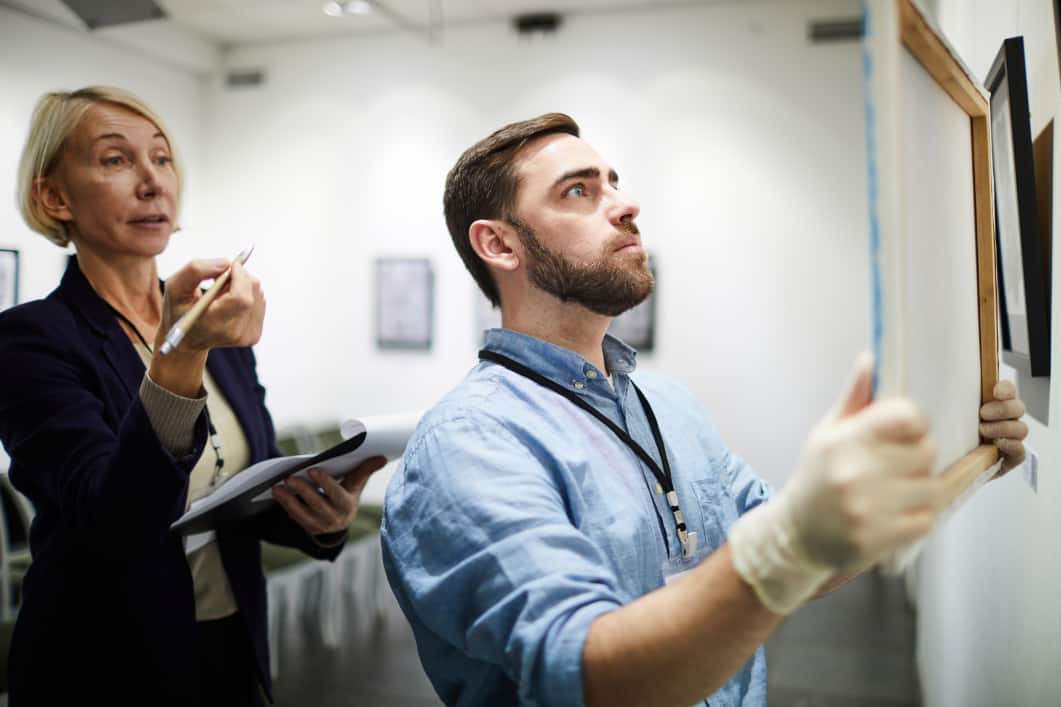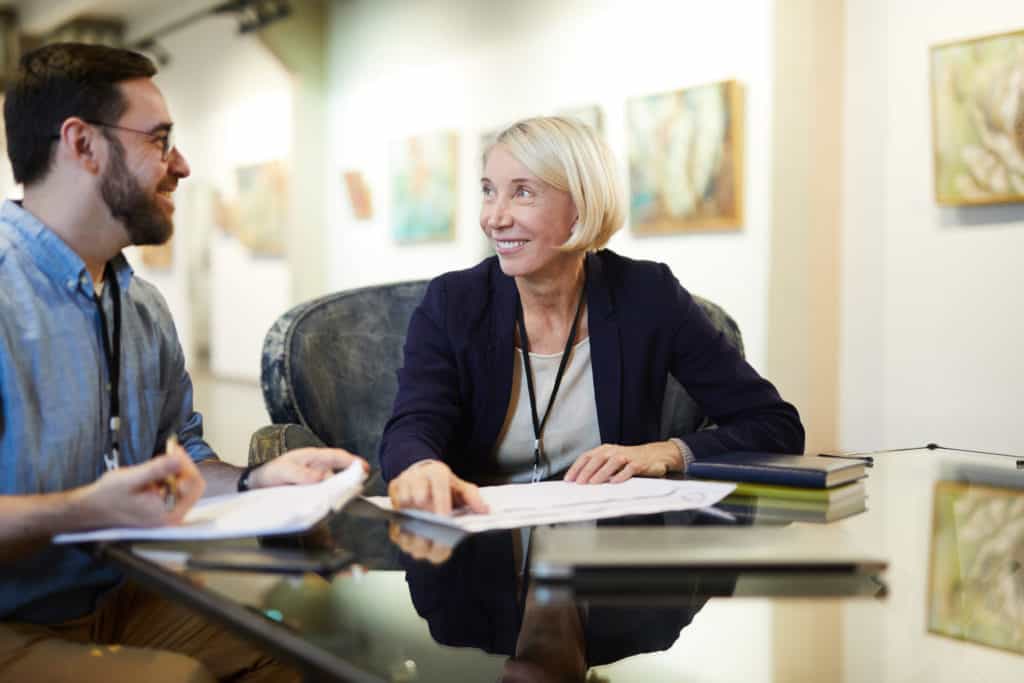As you browse an online art marketplace, you spot a piece that really speaks to you. You even know exactly where you'll display it. But, before you buy, new collectors should learn how to authenticate art.
To authenticate art, collectors must review the provenance or history of the piece. Hiring a professional specializing in the style or artist to produce an authentication report can establish or confirm that the artwork is genuine. Artificial intelligence has begun to augment the art evaluation process.
The art world can be an intimidating place for newcomers. There are several ways to authenticate artwork, but keep in mind that even documentation may not be accurate or complete. Luckily, there are many resources to aid your research. Understanding provenance is an excellent first stop.

Review & Research The Provenance
Provenance is a document that establishes the origin and history of ownership of the artwork and is vital in establishing authenticity. The term is derived from the French verb 'provenir,' meaning 'to come from.' If you are looking to authenticate a piece of art, then sourcing and verifying provenance should be your starting point. Note that there are many forms provenance can take. Provenance for early-century pieces will be handwritten, whereas provenance for contemporary art may take handwritten or digital formats.
Provenance specifies:
- The artist
- Date of creation
- Title (if applicable)
- Dimensions
- Medium
- Record of ownership
Artbusiness.com provides the following forms of provenance:
- "A signed certificate of authenticity from the original artist or a widely respected and recognized authority on the artist.
- An exhibition or gallery sticker attached to the art.
- A signed receipt, statement, or certificate directly from the artist that specifically describes the work.
- An original sales receipt from a gallery specializing in or knowledgeable about the art, a receipt directly from the artist, or both.
- A film or recording or photograph of the artist talking about the art or pictured with the art.
- An appraisal from a recognized authority or expert on the artist.
- Verifiable names of previous owners of the art.
- Letters or papers from recognized experts or authorities discussing the art.
- Newspaper or magazine articles mentioning or illustrating the art.
- A mention or illustration of the art in a book or exhibit catalog.
- Documented materials or information about the art-related by someone familiar with the art or who personally knows the artist and who is qualified to speak authoritatively about the art."
If a provenance does not accompany an art piece, this can be a cause to abandon the purchase if you intend to own the work as an investment. Verifying the origin personally or through a private investigation is essential.
You authenticate a provenance by
- Taking a closer look at signatures, names, locations, and dates.
- Trace the ownership lineage to real people and real places.
- Contact the previous owners and note the date of your contact.
- Compare the signature with an authentic signature.
- Be knowledgeable about the history behind the artist.
For artwork from mid- and late-career artists with a large body of work, a provenance will be easier to obtain, verify, and accept. Emerging artists should be encouraged to establish provenance on a piece they created before releasing work to a collector.
Again:
Provenance should be established, even for modern art. As the world continues to digitize, so does the art world. This means that 21st-century provenance can take several online formats such as emails, authenticated scans of documents, or online listings that clearly establish the artist, the specifics of the piece, and the history of ownership.
New technologies like non-fungible tokens on a blockchain help solve the problem of authenticating and recording the artwork's history.
Ideally, your artwork includes a certificate of authenticity (COA) marking the origin of the artwork. This document must be original and include
- an original signature of the artist matching the signature on the piece
- fully-formed description of the work including dimension, material, subject, title, edition, etc. and
- a bill of sale from the artist
For further research on provenance, the International Foundation of Art Research (IFAR) offers a free and thorough provenance guide.
Use Artist's Catalogue Raisonné
As beginner collectors transition into more experienced enthusiasts, inevitably, work from artists with more notoriety enters their collection.
The catalogue raisonné is an academic record of artists and their artworks compilated by the recognized authority of the IFAR. This database catalogue is available through IFAR and contains a large inventory of authenticated descriptions of an artist's work.
Think of the catalog raisonné as a collection of provenance records for a particular artist's body of original work.
These catalogs can take years to produce. The majority of artists do not have a catalog, so don't be surprised if you can't find one.
The catalog facilitates research about a wide range of artists and provides a conclusive database from a recognized, trustworthy source. But, it's often better to add experience to the research process.

Hire a Professional
A professional has the experience and the methods to examine your art piece and the provenance and determine its authenticity.
The ideal art expert is someone who has specific knowledge of the artist. This professional has reviewed many pieces from a particular creative and can tell with authority that the work and the associated documentation are genuine.
Alternatively, a professional with broader knowledge will be able to assist in authenticating a work of art. An art historian, professor, or museum curator may have specific expertise in your particular art style, era, or artistic movement. They can lend their experience and credentials to become a part of your art's provenance.
There are many institutions in the United States where you can find a professional trained in art authentication. The National Association of Schools of Art and Design (NASAD) accredits schools, conservatories, colleges, and universities where art, design, and related fields are taught.
Once you've found an authenticator, it's crucial to establish and document a contract of services to be rendered. This is the same process as when you hire an art appraisal and should become a standard ask whenever you're hiring someone to provide research and report findings. Often, they will have these service contracts and also be able to provide a sample report. All these documents become part of your provenance and add value to the artwork in question.
As with many fields, art has a niche of the law unto itself. Art lawyers exist who specialize in all matters supporting the authentication, valuing, and documenting works of art. They can also direct and refer collectors to some estate and tax-related issues surrounding art collections.
Consulting with and hiring professionals in the process of authenticating art is often money well spent. Increasingly, these experts have new research sources and cutting-edge tools at their disposal.
Artificial Intelligence In Art Authentication
In addition to the current methods like chemical analysis and carbon dating, artificial intelligence has become a helpful tool to examine original artwork and analyze its authenticity.
Algorithms "learn" technical and stylistic patterns when comparing many of an artist's works.
For example, in an illustration, an AI program will measure the pen's pressure on the paper in each drawn line, what direction the pen was moved, and how these marks are connected. Based on its findings, the algorithm then compares the results to the artist's historically verified patterns to see if they match.
Two experts based in Switzerland, Dr. Carina Popovici and Christiane Hoppe-Oehl, developed art recognition software in 2017. The algorithm successfully detected a forged version of La Horde, which was due to be auctioned at millions of dollars.
With a reported accuracy above 80%, the Popovici-Hoppe-Oehl model can analyze images of paintings detecting forgeries faster than humans. The traditional authentication process sometimes takes months to complete and includes an element of human inaccuracy and emotional biased.
Artificial intelligence is still seen as a tool for specialists to use and not to replace them. Algorithms require training and require intervention to correct flaws. Previous algorithms versions worked best on paintings. The model worked well primarily on Impressionists over other styles because of their structure and defined brushstrokes.
There are many skilled forgers in the art world who can produce fraudulent renditions of famous works. However, advances in technology could put a stop to art forgery for good. In the future, AI programs will have the capacity to fully synthesize the unique qualities and characteristics of an artist's work. Once collected, these models will be able to identify consistencies or rather inconsistencies in newly-presented works. The programs will assist in concluding whether the piece is fraudulent or authentic.

Is It Worth It To Get Professional Authentication
Professional authentication will add to the overall cost of ownership, whether you perform the investigation before purchase (ideal) or after the sale.
Hint:
Seemingly unconventional, a purchase agreement can be drafted that a piece can be returned if it fails authentication with a recognized report. See the documentary Made You Look on Netflix.
As with deciding to get an appraisal, some initial research into the value of your artwork will aid in the decision to seek authentication.
If your estimation of the fair market value of your piece supports the expense of an authentication and/or appraisal report, the additional documentation to the provenance can return a multiple of your cost when you go to sell.
What Is The Difference Between Authentication & Appraisal
An authentication is a proof that an art piece originates from a specific artist and is not a forgery.
An appraisal is an evaluation of what the art piece is worth. An art appraiser will determine the fair market value, what someone could be willing to pay, or the replacement value, how much the owner should receive in the case of a loss.
You can use the same person or company to both authenticate and appraise the art if they are known to have the expertise to do so. If not, the art appraisers generally assume that an art piece is authentic and will value it based on that. Both authenticators and appraisers need to know the artist and their style. But, the appraisers need to understand the market as well.
An appraisal report should not be misconstrued as provenance or authenticity. The clue is in the name. An expert may approximate the piece's value working off the assumption that it is by a certain artist from a certain time. However, the value appraisal does not imply nor guarantee that the work is authentic; it merely estimates the piece's worth, given the details that you have specified.
| Remember: These two terms are not synonymous. Read our article on appraisals to understand estimating the market value of a piece of art. |
|---|